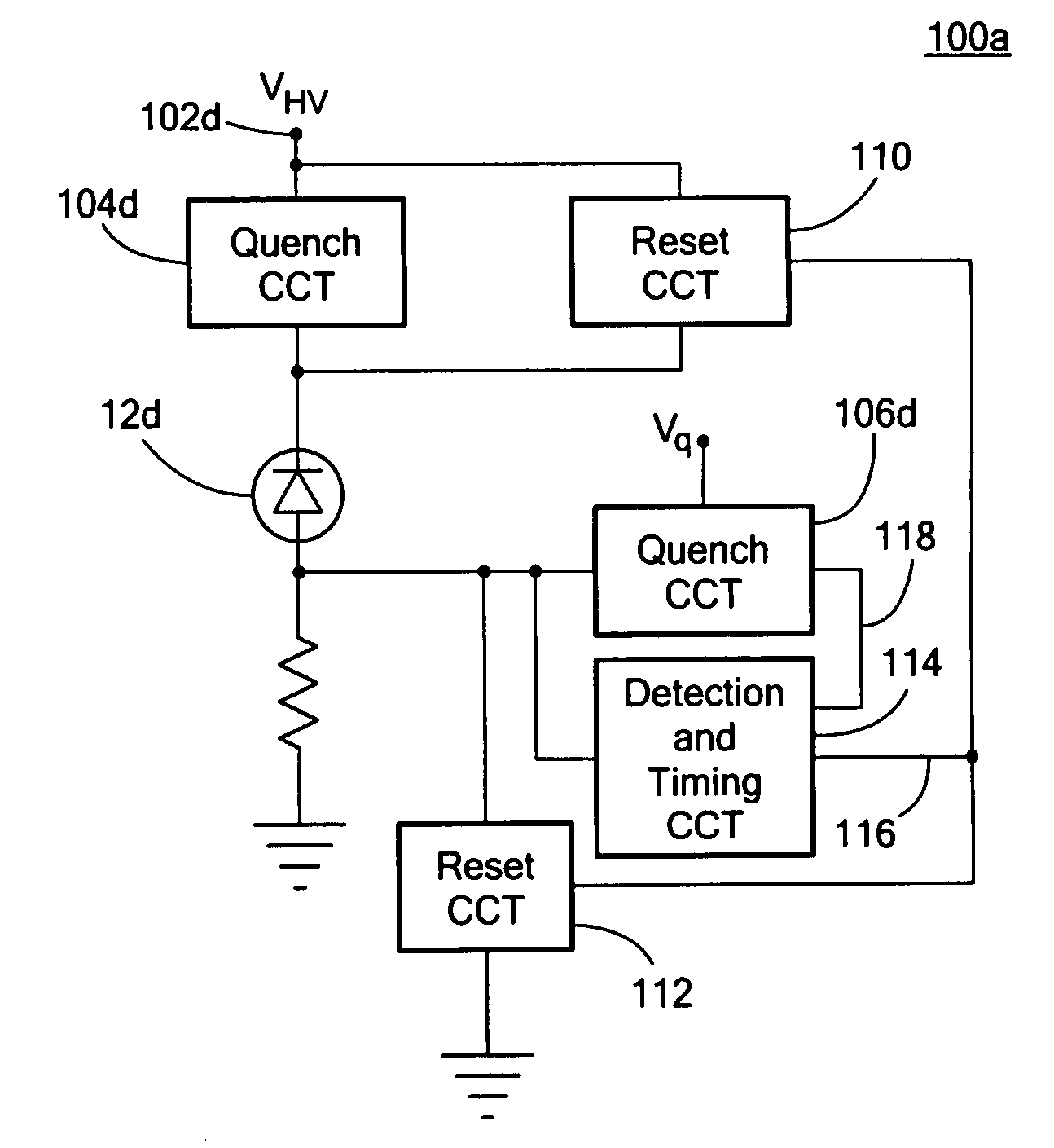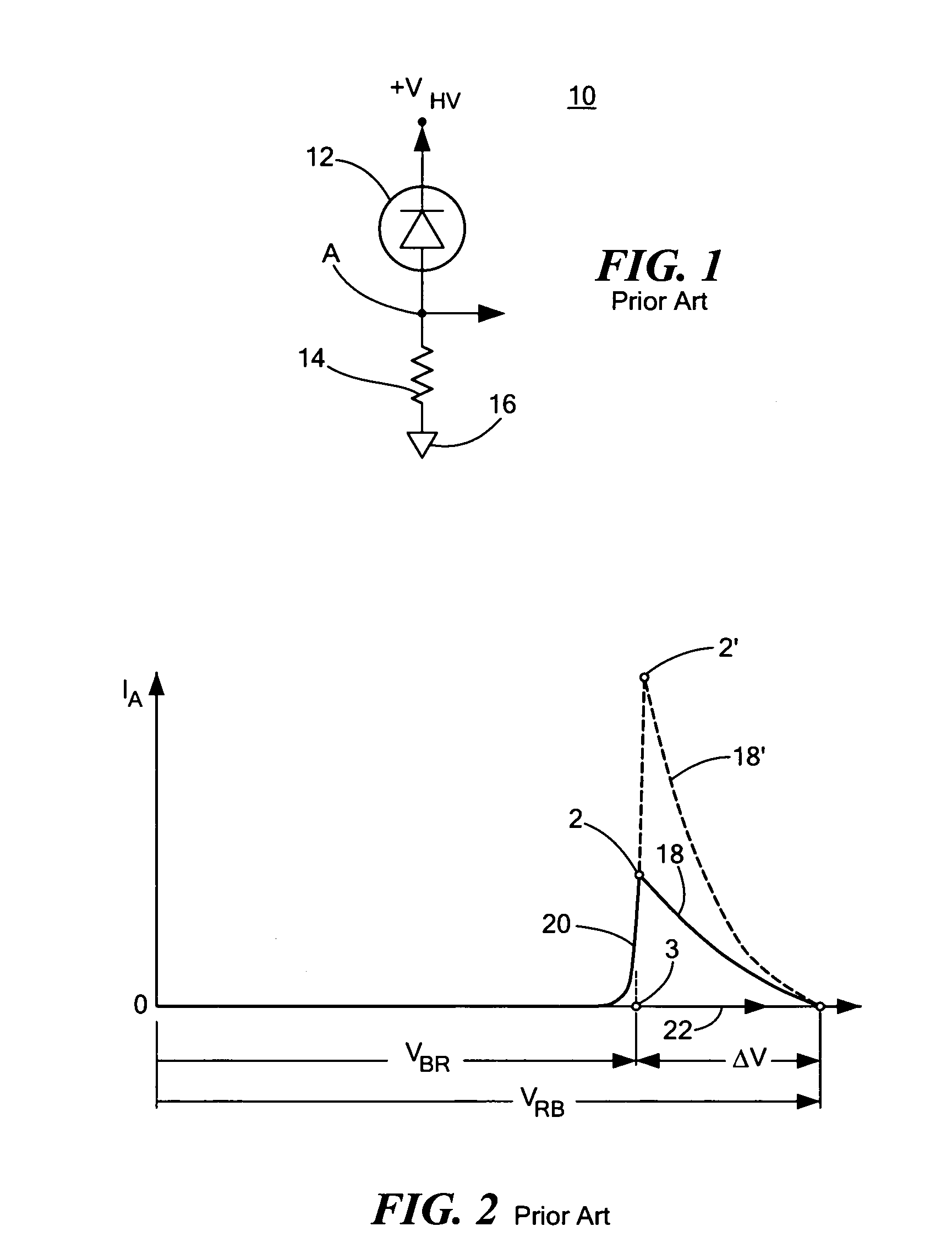Double quench circuit for an avalanche current device
a technology of avalanche current and quench circuit, which is applied in the direction of amplifiers controlled by light, automatic control of pulses, amplifiers, etc., can solve the problems of large rc time constant, parasitic or intrinsic capacitance, and limited minimum interval between detectable events, so as to reduce the heating of the avalanche current device, reduce the after pulsing of the avalanche device, and fast reset the avalanche device
- Summary
- Abstract
- Description
- Claims
- Application Information
AI Technical Summary
Benefits of technology
Problems solved by technology
Method used
Image
Examples
Embodiment Construction
[0029]Aside from the preferred embodiment or embodiments disclosed below, this invention is capable of other embodiments and of being practiced or being carried out in various ways. Thus, it is to be understood that the invention is not limited in its application to the details of construction and the arrangements of components set forth in the following description or illustrated in the drawings. If only one embodiment is described herein, the claims hereof are not to be limited to that embodiment. Moreover, the claims hereof are not to be read restrictively unless there is clear and convincing evidence manifesting a certain exclusion, restriction, or disclaimer.
[0030]There is shown in FIG. 1 one prior art passive quench circuit 10 including an avalanche diode 12 and a biasing resistor 14. Resistor 14 is connected at junction A to the anode of avalanche device 12 and at its other end connected to ground 16. The cathode of avalanche current device 12 is connected to a high voltage V...
PUM
 Login to View More
Login to View More Abstract
Description
Claims
Application Information
 Login to View More
Login to View More - R&D
- Intellectual Property
- Life Sciences
- Materials
- Tech Scout
- Unparalleled Data Quality
- Higher Quality Content
- 60% Fewer Hallucinations
Browse by: Latest US Patents, China's latest patents, Technical Efficacy Thesaurus, Application Domain, Technology Topic, Popular Technical Reports.
© 2025 PatSnap. All rights reserved.Legal|Privacy policy|Modern Slavery Act Transparency Statement|Sitemap|About US| Contact US: help@patsnap.com



